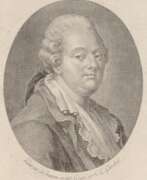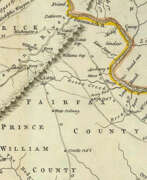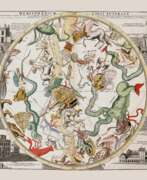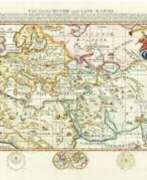Publishers 18th century


Rudolph Ackermann the Elder was a German and British inventor and publisher, founder of Ackermann & Co.
He was the son of a master saddler, learned the craft and in time achieved a high art in carriage making, designing carriages and coaches. In 1794 Ackermann opened a printing and picture store in London, which quickly became popular. The following year he opened a printing shop at 96 Strand - thus began the printing business of the Ackermann dynasty, which lasted for over two hundred years.
Between 1808 and 1810. Ackermann published the first of his sumptuous plate books, The Microcosm of London, with beautiful hand-colored aquatints. This work established his reputation as a book publisher, and he subsequently published many more elaborate illustrated books. Ackermann also gained widespread fame for the periodical he founded in 1809, the Repository of Art, Literature, Commerce, Manufactures, Fashion, and Politics. This popular journal, published monthly until 1828, contained articles and illustrations of various kinds, especially on fashion, social and literary news.
Ackermann's business flourished, and by the end of 1820 he had established offices in Central and South America. Continuators of the Ackermann dynasty were in the printing business until the end of the twentieth centur


Platon Petrovich Beketov (Russian: Платон Петрович Бекетов) was a Russian publisher, book printer, historian and collector.
Platon Beketov was born into an old Russian landowning family, from 1798 he lived in Moscow, where he became interested in collecting and in 1801 opened his own printing house, which was considered one of the best in Moscow. Beketov raised the national printing industry to a worthy level. His books were made with great artistic taste and elegance, more than a hundred beautiful editions in all. A number of editions of Russian authors were printed here, among them Vasily Andreyevich Zhukovsky, Alexander Nikolayevich Radishchev, Mikhail Matveyevich Kheraskov and others. The printing house also printed the magazines "Friend of Enlightenment" (1805) and "Inventory of Books Printed at the Dependence of Platon Beketov's Printing House" (1806).
Beketov was passionate about old manuscripts, especially with portrait miniatures and autographs, and portraits of famous contemporaries. He collected an entire picture gallery, which formed the basis of two of his major projects - the publication "Pantheon of Russian Authors" (1801-1802) and the collection "Collection of Portraits of Russians, famous..." (1821-1824). (1821-1824). The texts for them were written by the publisher's friend and distant relative N.M. Karamzin.
Platon Petrovich Beketov was widely known in the circles of the Russian intellectual elite of the first half of the XIX century. In 1811 he was elected chairman of the Moscow Society of Russian History and Antiquities, a position he held until 1823.


William Curtis was a British botanist and entomologist, editor of the oldest botanical publication in Great Britain.
Curtis became interested in natural history in his youth, and at the age of 25 had already published "Instructions for the Collection and Preservation of Insects", particularly butterflies. In 1779 he founded his own London botanical garden at Lambeth and published Flora Londinensis (1777-1798), a 6-volume work on urban nature.
In 1787 Curtis began publishing the later popular Botanical Magazine, which also featured hand-colored plates by artists. This magazine has changed its name several times over time, but is still continued by the Royal Botanic Gardens, Kew, as a publication for those interested in horticulture, ecology or botanical illustration. Interestingly, the magazine was entirely hand-colored until 1948.


Adam Friedel or Adam Friedel von Friedelsburg was a Danish soldier and pirate, painter and actor.
Having the character of an adventurer, Friedel became a participant in the War of Liberation in Greece 1821-1829. He was granted the title of Baron Friedel von Friedelsburg, but the information about his aristocratic origin was found to be false and he was expelled from the Greek army. He was eventually forced to leave Greece for London, where his talents as an actor, musician, and painter became apparent.
In London, Adam Friedel opened his own lithographic studio. He became best known for his portraits of the heroes and leaders of the Greek Revolution, first produced between 1824 and 1826. The series of 24 portraits sold in large editions throughout Europe. He also created several famous portraits of Lord Byron.


Jean-Benjamin de La Borde was a French composer, music historian, publisher and financier.
De La Borde played the violin and trained in composition. In 1748 he composed his first small opera, and in 1751 his opera Le Rossignol ou Le Mariage secret (The Nightingale or The Secret Marriage) was staged in Paris. The prolific composer went on to compose an average of 30 operas a year for 30 years, mostly of a comic nature.
De La Borde was also a prominent cultural figure of his time: he authored Essays on Music, a four-volume collection of songs for solo voice, and initiated the publication of the General and Private Description of France (1781-96).
For several years de La Borde was valet and favorite of Louis XV; he refused to leave France during the Revolution and was arrested and executed by guillotine on July 22, 1794.


Littret de Montigny, full name Claude-Antoine Littret de Montigny, was a French painter, engraver, and publisher.
Among de Montigny's other works, his album in which he depicted a variety of uniforms and flags of the French army under Louis XV, accompanied by a brief description, stands out, providing a unique insight into the French army of the time.


Joseph Dennie was an American writer, journalist, and major literary figure of the early 19th century.
Dennie graduated from Harvard College, became a lawyer, but became active in writing. In 1801, he founded a periodical called The Port Folio, which became the most prominent literary weekly of its time in America. It was also the first important political and literary journal in the United States.
As founder of the Tuesday Club, Dennie was the center of Philadelphia's aristocratic literary circle in the early 19th century and for a time was the leading literary critic in the country. He ridiculed the simplistic and crude nature of Native Americans and opposed democratic innovations. He also encouraged talented young writers.


Pierre Duflos the Younger was a French painter, engraver and publisher.
Duflos was a renowned copper engraver and created works based on paintings by popular artists of his time. Of special note is a large work entitled "A Collection of Engravings representing the Degrees, Ranks, and Dignities, corresponding to the Costumes of all existing Nations; with Historical Explanations and Abridged Lives of Great Men, which illustrated the Dignities with which they were adorned," published in Paris in 1780. It is a veritable encyclopedia of the costume of many cultures of the world. It depicts real people such as Confucius, Montezuma, Mohammed II, Ahmet IV, Cortes, Jacques-Auguste de Thou, Thomas More, Marie Antoinette, as well as types from Africa, Asia, the Americas and Europe, including indigenous peoples. Pierre Duflos created it in collaboration with Marie-Elisabeth Thibault and Clément-Pierre Marillier.


Martin Engelbrecht was a German Baroque painter and engraver, publisher, and inventor of the first miniature dioramas.
Martin and his brother Christian were skilled printers and engravers in Augsburg, Germany in the 18th century. Martin's works include illustrations for Ovid's Metamorphoses, The War of the Spanish Succession, P. Dekker's Les Architectes Princiers, 92 views of Venice, and the Assemblage Nouveau Des Manouvries Habilles, a series of engravings depicting laborers and their clothing, published in Augsburg around 1730.
Also around 1730. Martin Engelbrecht created maps for miniature theaters, which, inserted into a display box, showed religious scenes and pictures of everyday life in three-dimensional perspective. He devoted an entire series to Italian theater. These miniature theaters or Engelbrecht dioramas are considered the earliest paper theaters in history, and they became very popular in the 18th century as a means of home entertainment. Engelbrecht is known to have created at least forty-one sets of miniature theater dioramas.


Philip Morin Freneau was an American publicist, editor, and known as the "poet of the American Revolution".
After graduating from Princeton University, Freneau taught school and studied to become a minister. With the outbreak of the American Revolution, he began writing scathing satire on the British and the Tories. During a two-year voyage to the Caribbean islands, he created the poems "The Beauties of Santa Cruz" and "The House of Night," and in 1778 he became involved in the war. After his release from British captivity, Freneau wrote a book in verse, "The British Prison Ship" (1781).
After serving as a sea captain for several years, Freneau took up journalism. In his National Gazette newspaper in Philadelphia, he sharply criticized George Washington.
Freneau's poetry, which accompanied him throughout his life, covers a variety of subjects, including political situations, American Indians, nature, the sea, and naval battles. His political poems are often satirical, but his nature poems are very lyrical.


Pierre Giffart was a French painter, printmaker and engraver.
He was a royal engraver and created lithographic works on a variety of subjects. One of Giffart's famous works are plates from original Chinese works brought from China by the envoy of King Louis XIV of France, Joachim Bouvet, depicting graceful Chinese figures in traditional and ceremonial dress. The first French edition of Beauvais's The Historical Portrait of the Emperor of China, with illustrations by Pierre Giffart, was published in Paris in 1697, and was subsequently translated and published in other languages.


Johann Jakob Haid, a prominent German engraver and portraitist, was renowned for his work in Augsburg during the 18th century. Born into a family of artists, Haid's legacy is particularly noted for his exquisite mezzotint portraits. His career also involved a stint in England, where he was influenced by the works of English mezzotint engraver Robert Robinson.
Haid's artistic prowess was not limited to portraiture. He ventured into botanical illustration, contributing significantly to Johann Wilhelm Weinmann's "Phytanthoza iconographia". This collaboration showcases his versatility and technical skill in different art forms.
Collectors and experts in art and antiques often seek Haid's works for their unique artistic value and historical significance. His contributions to the art world, especially in mezzotint engraving, continue to be appreciated and studied. His works are a testament to the rich cultural and artistic heritage of Germany.
For those interested in the world of art and antiques, particularly in the realm of engraving and painting, Johann Jakob Haid remains a figure of significance. To stay updated on new product sales and auction events related to Johann Jakob Haid, sign up for our updates. This subscription is an excellent way to stay informed about the latest developments and opportunities in the field.


Nicolaus Heideloff, full name Nikolaus Innocentius Wilhelm Clemens van Heideloff, was a German painter and copperplate engraver and publisher.
Heideloff came from a respected family in Germany that included prominent painters and sculptors. He studied and worked in Paris, but had to flee to London during the French Revolution, where he spent 30 years of his life. Here he worked as a publisher for the most luxurious fashion magazine of the time, The Fashion Gallery, which published elaborate color copperplate prints, aquatints, and etchings. Heideloff drew many outfits for the publication for all occasions of high society.
Nikolaus Heideloff also depicted historical scenes, battles, the British navy, and caricatures for Rudolf Ackermann while he was working in London until 1814, often as hand-colored etchings.
In 1815, William I, King of the Netherlands, appointed him director of an art gallery in The Hague.


Thomas Jefferys was an 18th-century British cartographer and geographer, engraver and publisher.
As the best in the business of map-making, Jefferys held the honorary title of "King George III's geographer". He is known for his detailed and large-scale maps of the districts and counties of Great Britain as well as North America, particularly Virginia (1776). He was the leading map supplier of his day, engraving and printing maps for government and other official bodies.


Christian Friedrich Carl Kleemann was a German artist, entomologist, and publisher.
He is known for his work on the continuation of the voluminous work on entomology by August Johann Rösel (1740-1761). Due to ill health, Rösel was unable to complete his series, so his work was continued by his son-in-law Christian Friedrich Karl Kleemann with the help of his daughter Katharina Barbara Kleemann. The second edition as well as the 6th part of this work did not appear until after Kleemann's death under the direction of Christian Schwarz. Most of the descriptions are devoted to butterflies, but other invertebrates, such as crabs, spiders, mollusks, and polyps, are depicted in addition to insects.


Jan Kops is a Dutch agronomist, botanist and publisher of thematic journals.
In his youth, Kops was interested in botany, but had to study to become a priest. He soon became disillusioned with a career as a preacher and took up his favorite occupation. The fruit of his botanical research was the first volume of the Flora of Batavia, published in 1800. He was engaged in the task of converting the dunes into agricultural land.
Kops great importance to the country's agriculture lies mainly in his work as the first Dutch agricultural official. He possessed great efficiency and great perseverance. On Kops's initiative, the first Dutch agricultural journal, Magazijn van Vaderlandschen Landbouw, appeared between 1803 and 1814, which he himself edited.


Evert Maaskamp was a Dutch artist and engraver, publisher and print dealer.
In addition to publishing geographical publications, topographical maps and engravings, Maaskamp produced very high quality illustrated works on sheet metal. Throughout his career he collaborated with the English artist Charles Howard Hodges, whose influence is evident in many of Maaskamp's engravings.


Edward Orme was a British artist, engraver and publisher of illustrated books.
He was engraver to King George III from 1799 to 1820 and to the Prince of Wales, painting portraits and landscapes. Edward Orme was a successful publisher, publishing many illustrated books. He had several stores in London.
Edward Orme is the younger brother of the painter and engraver Daniel Orme.


Reinier & Joshua Ottens was a Dutch printing publishing partnership of two brothers.
The publishing house was founded in 1726 in Amsterdam by brothers Reinier Ottens (1698-1750) and Joshua Ottens (1704-1765). After the death of Reinier I, his son Reinier II continued the business until 1765. Much of the activity of this business consisted of reissuing old plates.


Pierre Paul Alexandre Joseph Pluchart was a French and Russian artist, printer, lithographer and publisher.
In 1805 he came to Russia to manage the printing house at the Ministry of Foreign Affairs, then served in the Senate Printing House. Plushar was a good draughtsman and lithographer, he mastered the publishing business to such an extent that by 1813 he opened his own printing house in St. Petersburg. It soon gained fame as one of the best printing houses in Russia, where books in Russian and European languages were printed, and it even opened its own bookstore.
After Alexandre Plushar's death, his widow Henrietta and his son Adolf Plushar (1806-1865), a publisher, took over the printing house. Another of his sons, Eugene Plushar (1809-1880), became a famous artist.


Louis Renard was a Dutch painter, printmaker and book publisher born in France.
Renard published map atlases and illustrated works of natural history popular in 18th-century Europe. In Amsterdam he acquired many cartographic plates by Frederick de Wit, which he combined with minor updates and corrections into an Atlas of Navigation and Commerce and published in 1715. He later sold the plates to R. & J. Ottens, who republished it in 1745.
In 1718 -1719 Renard published the first edition of his most famous multi-volume work, Poissons, écrevisses et crabes... que l'on trouve autour des Isles Moluques, et sur les cotes des Terres Australes ("Fish, crayfish and crabs, of varied colors and unusual forms, which are found around the Moluccas Islands and on the coasts of the southern lands."). This book was the world's first encyclopedia of fish illustrated in color. While working on it, Renard copied drawings by other artists, notably the talented Dutch artist Samuel Fallors. The result was 460 hand-colored copperplate prints.
The creatures in Renard's book are so fanciful that they may seem fictional, but only about 10 percent are, including the depiction of a mermaid. Most likely, these fantasies were included for the sake of attracting buyers. The work is now believed to be an important part of eighteenth-century scientific literature.


Anne Royall, née Newport, was an American writer, newspaper editor and traveler, one of the first women journalists in the United States.
After the death of her husband William Royall in 1813, Anne was left destitute, but she did not despair and completely changed her life. She was about 50 years old when she set out to travel the country and describe what she saw. She visited Baltimore, Philadelphia, New York City, Albany, Springfield, Hartford, Worcester, Boston, and New Haven. In each city, she asked respected citizens for interviews and subscriptions to her future books. She made detailed notes on each town's population, industry, physical description, local transportation, regional dialects, fashions, and the character of its inhabitants.
In all, Anne Royall wrote ten volumes of travel books. She was 57 years old when she published under a pseudonym her first book, The Traveler: Sketches of History, Life, and Manners in the United States (1826), which provides a unique look at American life in the early nineteenth century. His first novel, The Tennessean, was published in 1827, followed by several others.
At the age of 62, in her home in Washington, D.C., Royall began publishing her own newspaper, Paul Pry (1831-1836) and then The Huntress (1836-1854). She exposed bribery and corruption and made many powerful enemies. Nevertheless, it is known that the intrepid journalist during her life met and talked with every man who occupied the presidential chair, from George Washington to Abraham Lincoln.


Jan Christiaan Sepp was a Dutch book publisher, printmaker and illustrator.
Jan Christiaan Sepp belonged to a dynasty of collectors, publishers and traders in printed books founded by his father, Christian Sepp (c. 1700-1775) in Goslar, Germany. Jan Christian Sepp is known for being the chief illustrator, creating the magnificent engravings for Cornelius Nozeman's highly prized work entitled Nederlandsche Vogelen (Birds of the Netherlands, 1770-1829). These copperplate engravings, superbly composed, meticulously engraved and hand-colored are of great value.
After Christian Sepp's death, the work of illustrating the five volumes was completed by his son, Jan Sepp. Each volume of this five-volume work of science and art contains 50 images of bird species, and each species is described on several pages.


Elihu Hubbard Smith is an American author, writer, and physician.
Smith graduated from Yale College as early as age 11 with a liberal arts education, followed by a medical degree. He worked at New York Hospital and published historical articles on plague and plague fevers.
Elihu Smith was a very active writer: he was a member of the Hartford Witters, wrote the first American comic opera "Edwin and Angelina" (1796), was the editor of the first book anthology of American poetry ("American Poems, Selected and Original," 1793) and the first national American medical journal ("Medical Repository"), and corresponded extensively with many writers and writers of his time.
Smith died at age 27 of yellow fever, which he contracted while treating patients during an outbreak in New York City.


Cornelius Suhr was a German painter, lithographer and publisher.
Cornelius is a member of the Suhr family of painters from Hamburg, the younger brother of Christoffer Suhr (1771-1842) and the older brother of Peter Suhr (1788-1857).
After 1805, he and his older brother Christoffer began painting panoramic views of their hometown in gouache, creating landscape paintings from all over Hamburg. Cornelius was also responsible for their distribution. Later, Peter Suhr joined the family business, forming a general lithographic company that also printed books and playing cards. Together they produced several hundred lithographs, engravings and etchings.


Christoph Weigel the Elder, full name Johann Christoph Weigel, was a German painter, engraver and publisher.
Weigel worked very successfully in the mezzotint technique. He was the first engraver to use a kind of machine for making backgrounds. He established his own printing house in Nuremberg in 1698, and worked closely with the imperial geographer and cartographer Johann Baptist Homann (1664-1724) to produce his maps. His younger brother Johann Christoph Weigel kept an art trade store in Nuremberg around the same time, and also quite successfully.
One of Weigel's most important works is the Ständebuch (Book of Classes) of 1698, which describes and illustrates with engravings more than two hundred trades and services, including mining.


Michael Wening was a Bavarian artist, engraver and publisher of the Baroque period.
Wening was court engraver to Elector Ferdinand Maria of Bavaria and his successor Elector Max Emanuel. By the end of the 1670s, he opened his own publishing house, where he successfully published illustrated calendars and then topographical and historical materials for more than a decade.
Wening's main work - "Historico-Topographical Description" with 846 views - is considered the most complete description of Europe in the early modern period. To create it, the master himself traveled to many cities and made very accurate illustrations. The topographical work includes views and descriptions of towns, markets, monasteries, palaces, castles, court marks, and estates in Bavaria. The accompanying texts, which are a valuable addition to the engravings, were written by the Jesuit Ferdinand Schönwetter.


Adam Ludwig Wirsing was a German engraver, illustrator and publisher.
As an engraver and publisher, Wirsing ran a family business in Nuremberg, with particular success in hand-colored, realistic depictions of birds and their nests, animals, flowers, insects, and so on.


Jeremias Wolff was a German engraver and publisher.
Wolff was an engraver and watchmaker, but managed to create in Augsburg the largest art publishing house of the first half of the 18th century, which employed the best engravers of his time. The workshop, most often under Wolff's own name, produced maps and popular copperplate engravings. Among them is an album with illustrations of costumes of the Ottoman Empire, Germany, Switzerland, France and Turkey in the 18th century.
On the initiative of Jeremias Wolff, the Imperial City Art Academy was founded in Augsburg in 1710.


John Young was a British engraver, illustrator and publisher, and a curator of the British Institution.
Young worked exclusively in mezzotint and was a master of this technique; he executed some eighty portraits of contemporary characters from paintings by famous artists. In 1789 he was appointed mezzotint engraver to the Prince of Wales.
In 1815. Young published an album, Portraits of the Emperors of Turkey from the Founding of the Monarchy to 1808, consisting of thirty color plates with text in English and French. It is interesting that this series of portraits of Turkish emperors based on the album of miniatures of the XIX century was commissioned by the 28th Sultan Selim III, who ruled from 1789 to 1807, and after his death under Sultan Mahmud II the work was continued, which testifies to the high interest of the Ottoman Empire in European art.































